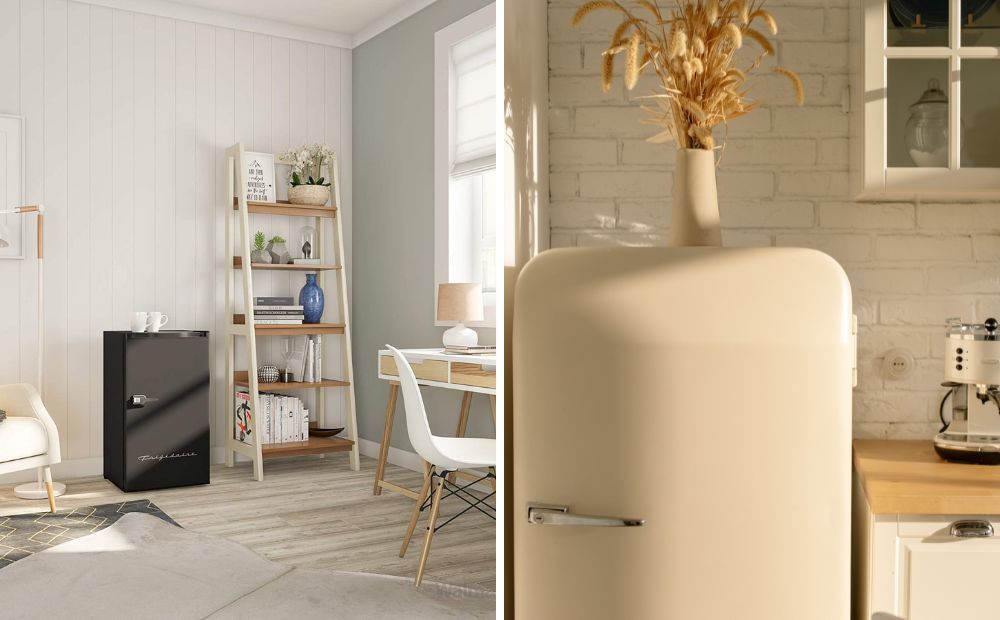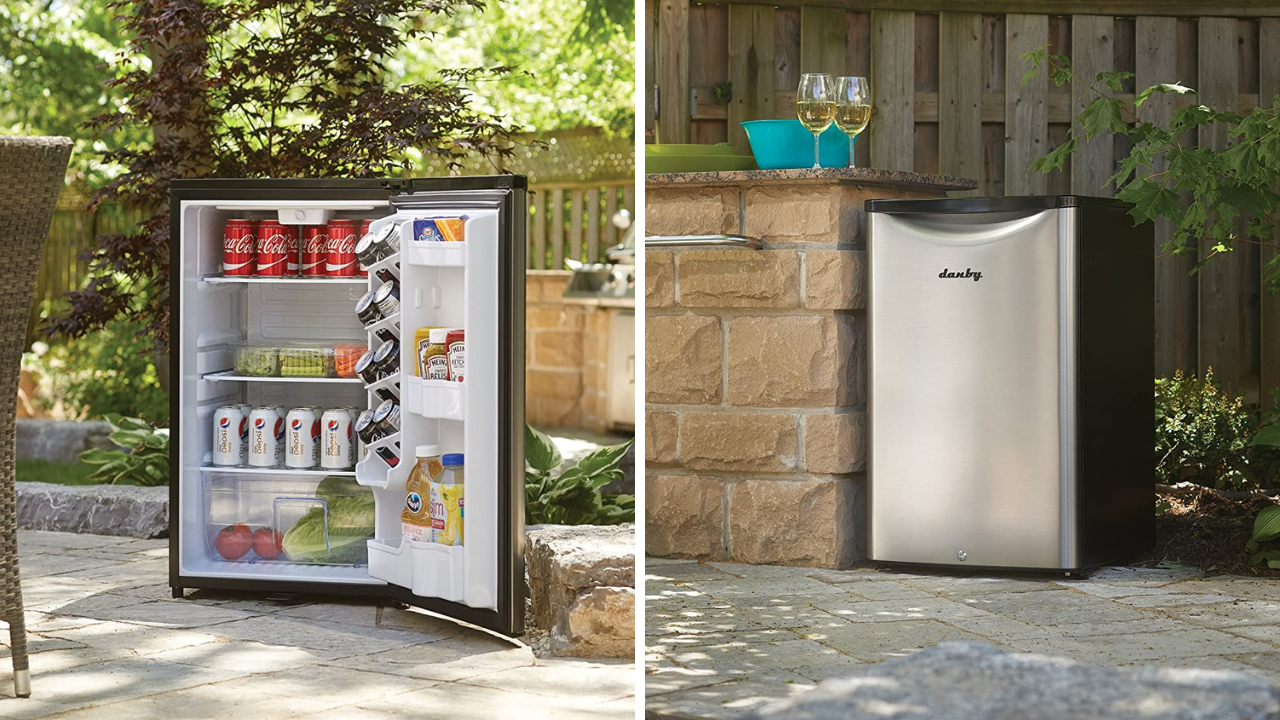Mini fridges, also known as compact refrigerators, are popular appliances for small spaces such as dorm rooms, home offices, or bar areas.
However, it's important to consider the electricity usage of a mini fridge before making a purchase.
Understanding the power consumption of these appliances can help you make an informed decision and manage your energy costs effectively.
Power Usage and Energy Consumption
When it comes to assessing the electricity usage of a mini fridge, there are two key factors to consider: power usage and energy consumption.
Power usage refers to the rate at which the mini fridge utilizes electricity, measured in watts (W) or kilowatts (kW).
On the other hand, energy consumption represents the actual amount of electricity the mini fridge consumes over a specific period, measured in watt-hours (Wh) or kilowatt-hours (kWh).
The power usage of a mini fridge can vary depending on several factors, including the model's efficiency, size, and usage patterns such as door openings and fridge fullness.
Typically, mini fridges use between 50 and 100 watts of power, while larger full-sized refrigerators can use anywhere from 350 to 780 watts.
It's important to note that mini fridges have a lower running wattage as they cycle on and off throughout the day.
To estimate the energy consumption of a mini fridge, you can multiply its daily power usage by 24 to represent a full day of operation. Then, divide the result by 1,000 to convert watts into kilowatt-hours.
This will give you an estimate of the energy consumed by the mini fridge in a day. Multiplying this value by the cost per kilowatt-hour charged by your utility company will help you determine the daily, monthly, or annual cost of running your mini fridge.
You can read all about energy and power consumption in more detail by reading RenewableWise's article for further information.
Comparing Mini Fridges to Larger Refrigerators

Mini fridges may have a smaller size compared to full-sized refrigerators, but their energy efficiency can vary.
Some compact refrigerators consume more energy than larger models, making it crucial to consider their energy efficiency before making a purchase.
Energy Star-certified mini fridges are known for their superior energy efficiency, consuming less power compared to non-certified models.
When comparing the energy usage of mini fridges to larger refrigerators, it's important to consider the size and cooling capabilities of the appliances.
Full-sized refrigerators generally have a higher energy consumption due to their larger capacity and increased cooling requirements.
However, advancements in technology and energy standards have made newer full-sized refrigerators more efficient than older models.
Estimating Energy Costs
Understanding the energy costs associated with running a mini fridge can help you manage your electricity expenses effectively.
By estimating the energy consumption and multiplying it by the cost per kilowatt-hour charged by your utility company, you can calculate the daily, monthly, or annual cost of running your mini fridge.
For example, let's assume your mini fridge has a daily energy consumption of 0.680 kilowatt-hours (kWh) and your utility company charges $0.13 per kWh.
Multiplying these values together, the estimated daily cost of running your mini fridge would be $0.0884. This would result in a monthly cost of approximately $2.65 and an annual cost of $31.80.
It's important to note that the actual energy costs may vary depending on your specific utility rates and the energy efficiency of your mini fridge.
Additionally, energy prices can differ based on your location and the time of year, so it's essential to refer to your utility bill or contact your electrical company for accurate pricing information.
The Effects of Electricity Consumption in Mini Fridges
Mini fridges are a convenient appliance, especially for small spaces or single-person households. However, they can also make a noticeable impact on your electricity bill.
Here's a deep dive into the factors that influence how much power a mini fridge uses and tips to maximize its efficiency.
Usage Patterns
One of the main factors affecting the power consumption of your mini fridge is how you use it.
For instance, the frequency of opening and closing the door can significantly affect energy use.
Each time you open the fridge, cold air escapes, and the fridge has to work harder to cool down again.
Similarly, the more frequently you restock your fridge, the harder it has to work to cool down new items.
The temperature set point also plays a crucial role. The colder you set your fridge, the more energy it consumes.
It's generally recommended to set your fridge at around 38°F (3.3°C) for optimal efficiency and food safety.
Fridge Factors
Aside from usage patterns, the fridge itself also plays a significant role in energy consumption. Here are some key factors:
- Insulation Quality: A fridge with good insulation retains cold air better, reducing the amount of energy needed to maintain the set temperature.
- Cooling Technology: Different fridges use different cooling technologies, which can greatly affect their energy efficiency. For instance, fridges that use inverter technology can be more energy-efficient as they adjust their power levels to meet cooling demands.
- Age and Size: Older models generally consume more energy than newer ones due to less efficient technology. Moreover, while compact refrigerators are smaller, they aren't always more energy-efficient than full-sized fridges.
- Ambient Temperature: The temperature outside the fridge can affect its energy consumption. If the surrounding temperature is high, the fridge will need to work harder to stay cool.
Tips for Optimizing Mini Fridge Energy Usage
While compact refrigerators can be convenient additions to small spaces, there are several tips you can follow to optimize their energy usage and reduce costs:
Choose an Energy Star-Certified Model
- Energy Star-certified mini fridges are designed to meet strict energy efficiency guidelines, ensuring that they consume less power.
Maintain Appropriate Temperature Settings
- Set your mini fridge's temperature to the recommended level, typically around 37 degrees Fahrenheit (3 degrees Celsius), to ensure optimal energy efficiency.
Keep the Fridge Door Closed
- Avoid frequently opening the mini fridge door as it allows cool air to escape and warm air to enter, causing the appliance to work harder and consume more energy.
Avoid Overfilling Che Fridge
- Overpacking the mini fridge can restrict airflow and reduce its efficiency. Ensure proper ventilation within the fridge by arranging items neatly and avoiding overcrowding.
Clean the Condenser Coils
- Regularly clean the condenser coils located at the back or bottom of the mini fridge to remove dust and debris. Dirty coils can hinder heat dissipation and increase energy consumption.
Place the Fridge in a Cool Location
- Keep the mini fridge away from heat sources such as direct sunlight, ovens, or heating vents. Placing it in a cooler spot will help reduce its energy usage.
Leave Some Space at the Back
- To ensure proper cooling and energy efficiency, it's important to leave a few inches of space between the back of your mini fridge and the wall. Mini fridges release heat from the back, and if this heat is unable to dissipate, the fridge will consume more power to maintain its cooling function.
By following these tips, you can maximize the energy efficiency of your mini fridge and minimize its impact on your electricity bill.
- How To Defrost A Mini Fridge
- Mini Fridge vs Beverage Cooler
- Mini Frige vs Wine Cooler
Summary
Mini refrigerators are popular appliances for small spaces, but it's essential to consider their electricity usage before making a purchase.
Understanding the power usage and energy consumption of mini refrigerators can help you estimate their energy costs accurately.
By selecting an energy-efficient model, maintaining appropriate temperature settings, and following energy-saving practices, you can optimize the energy usage of your mini fridge and reduce your overall electricity expenses.
Frequently Asked Questions
How much does mini fridge cost to run?
The cost of running a mini fridge depends on the size of the fridge, the energy efficiency of the model, and the cost of electricity in your area. Generally, a mini fridge will cost anywhere from $0.05 to $0.45 per day to operate. To get an exact estimate, you should consult your electricity bill or contact your local utility company.
Does mini fridge save electricity?
Yes, mini fridges can save electricity. Mini fridges are designed to be more energy efficient than regular fridges, and they use less energy to keep food cold. Additionally, mini fridges are often smaller in size, so they require less energy to keep their internal temperature at a consistent level. This makes them more energy efficient than regular fridges, which tend to be much larger and require more energy to maintain a consistent temperature.
Does a 12v mini fridge use a lot of electricity?
No, 12v mini fridges are designed to use very little electricity. They typically use less than 1 amp per hour, which works out to about 12 watts per hour. That means a 12v mini fridge will use about 288 watts per day, or 8.64 kWh per month. This is a very small amount of electricity and is much less than a standard refrigerator.
Can a mini fridge be on 24/7?
Yes, a mini fridge can be on 24/7. However, it is important to keep in mind that the fridge will be using energy to keep the food and beverages inside cold. As such, it is important to make sure that the fridge is well insulated and that the door seal is tight to ensure that the energy used is as efficient as possible. Additionally, it is important to check the temperature of the fridge regularly to ensure that it does not get too cold, as this can cause food to spoil.
Do mini-fridges put out a lot of heat?
No, mini-fridges generally do not put out a lot of heat. They are designed to be energy-efficient and do not require a large amount of energy to cool the contents. As a result, mini-fridges are much less likely to generate excess heat than larger fridges. In addition, mini-fridges are often equipped with adjustable thermostats that allow you to set the temperature to your desired level, which helps to reduce the amount of heat generated.
What is the disadvantage of a small fridge?
The main disadvantage of a small fridge is that it has limited storage capacity. This means that you will not be able to store large amounts of food, drinks, or frozen items. Additionally, a small fridge may not be energy efficient, as it will need to work harder to keep the temperature regulated in a smaller space. Finally, a small fridge may not be able to accommodate larger items such as a gallon of milk or a large pizza box.
If you are looking for a mini fridge then check out our article on the Best Mini Fridge Picks.

Or if you are looking for a mini fridge for a bedroom then check our article on Bedroom Mini Fridges.

Looking for an outdoor mini fridge? Then our article on the Best Outdoor Mini Fridge may also interest you.











